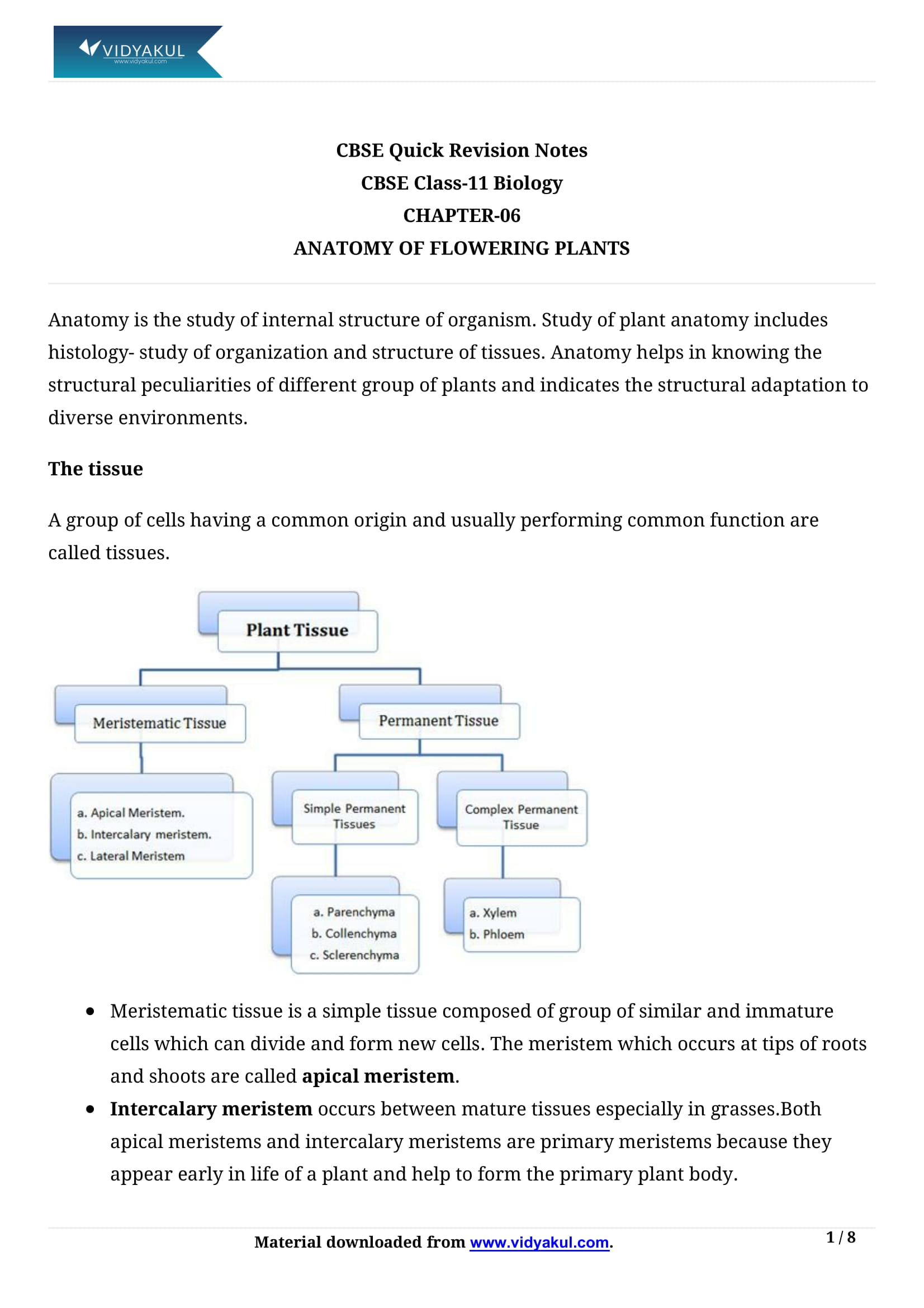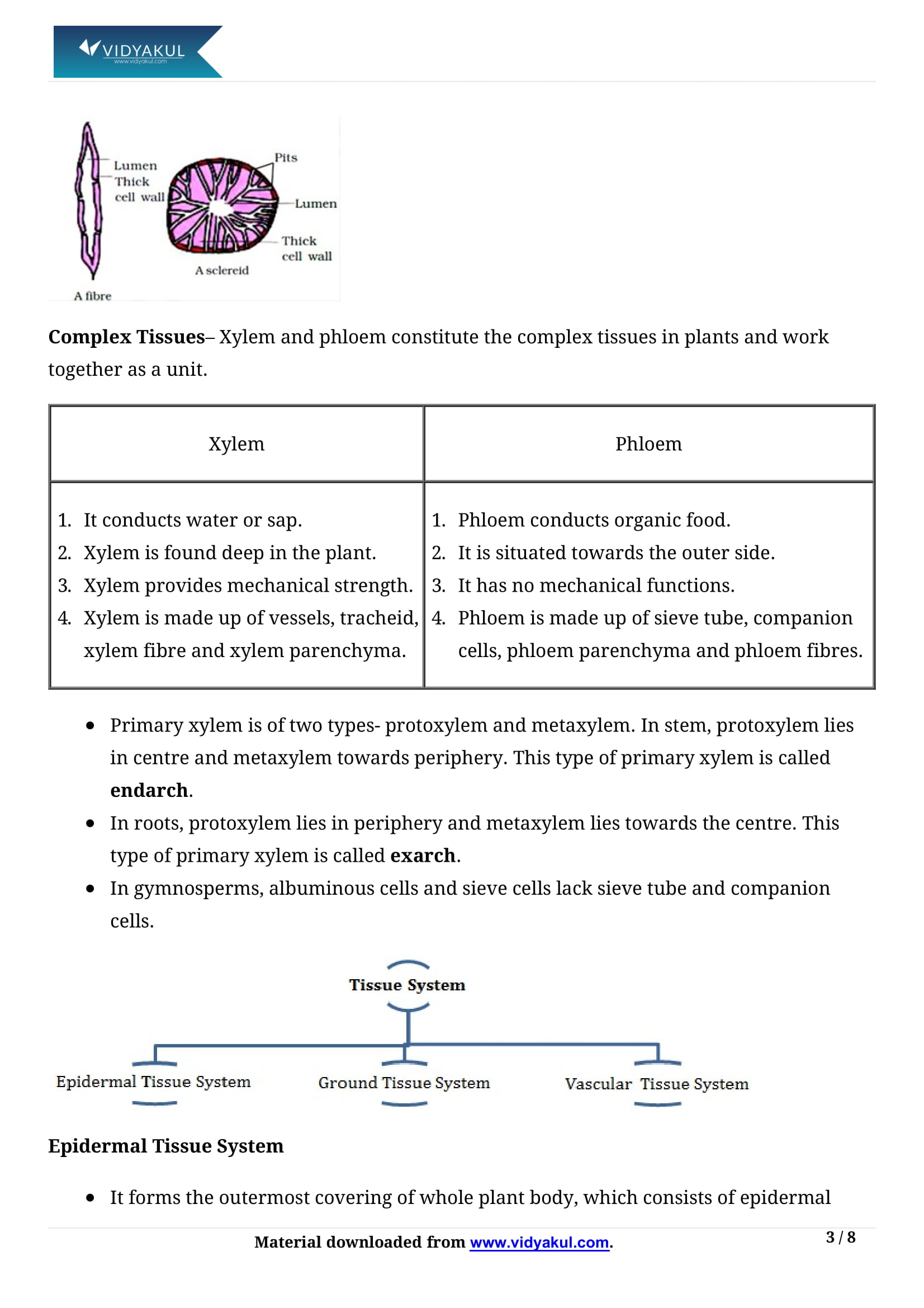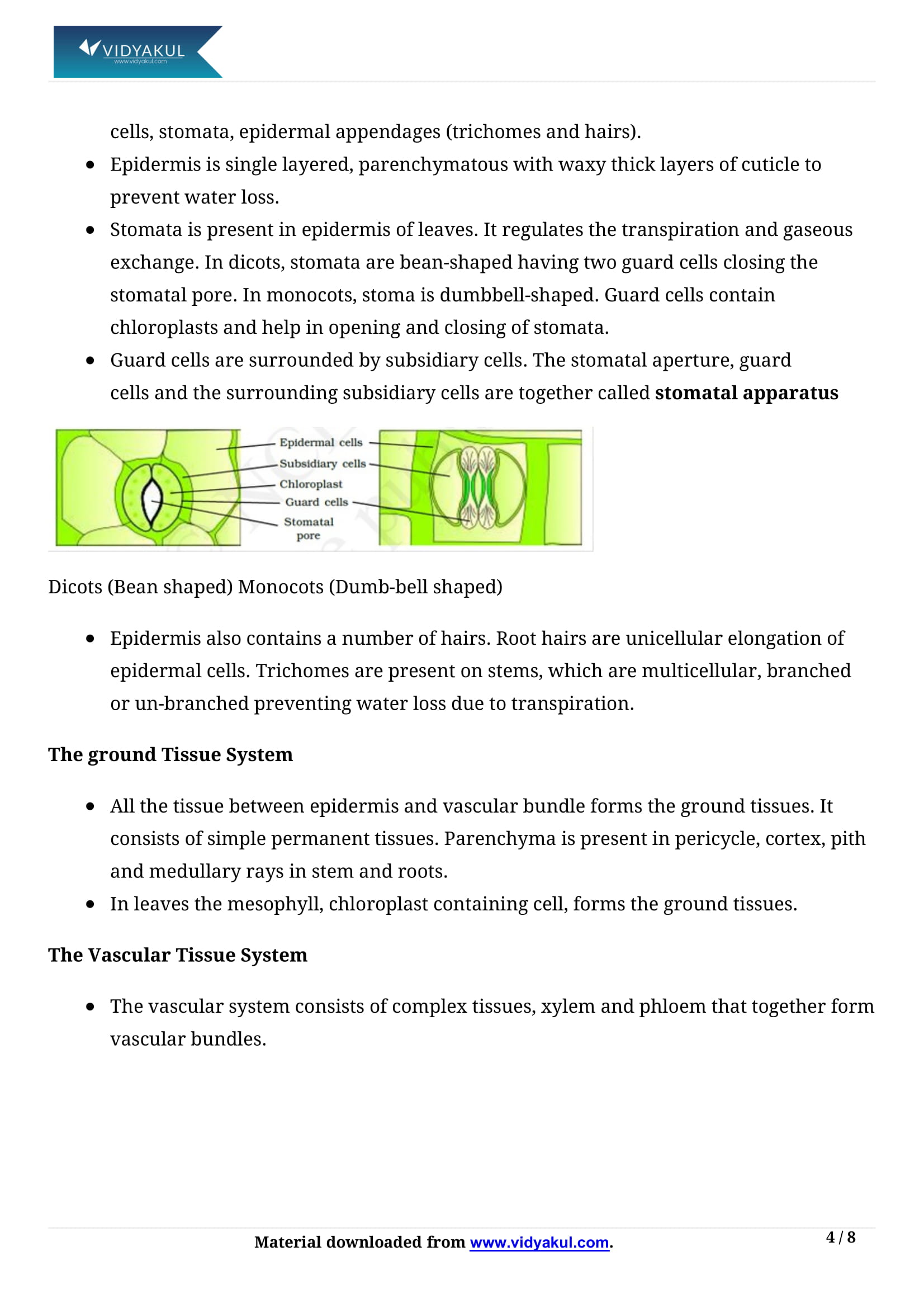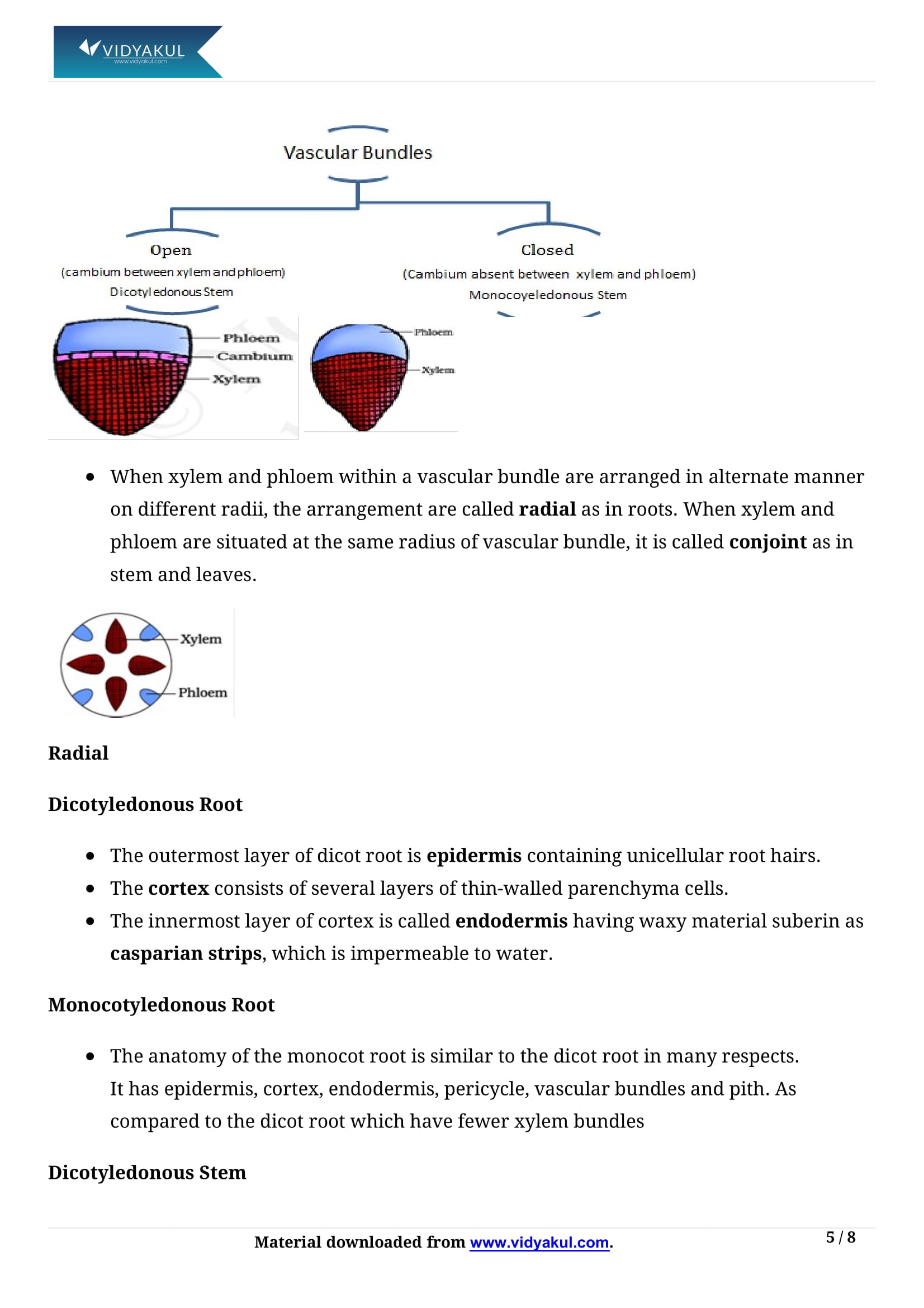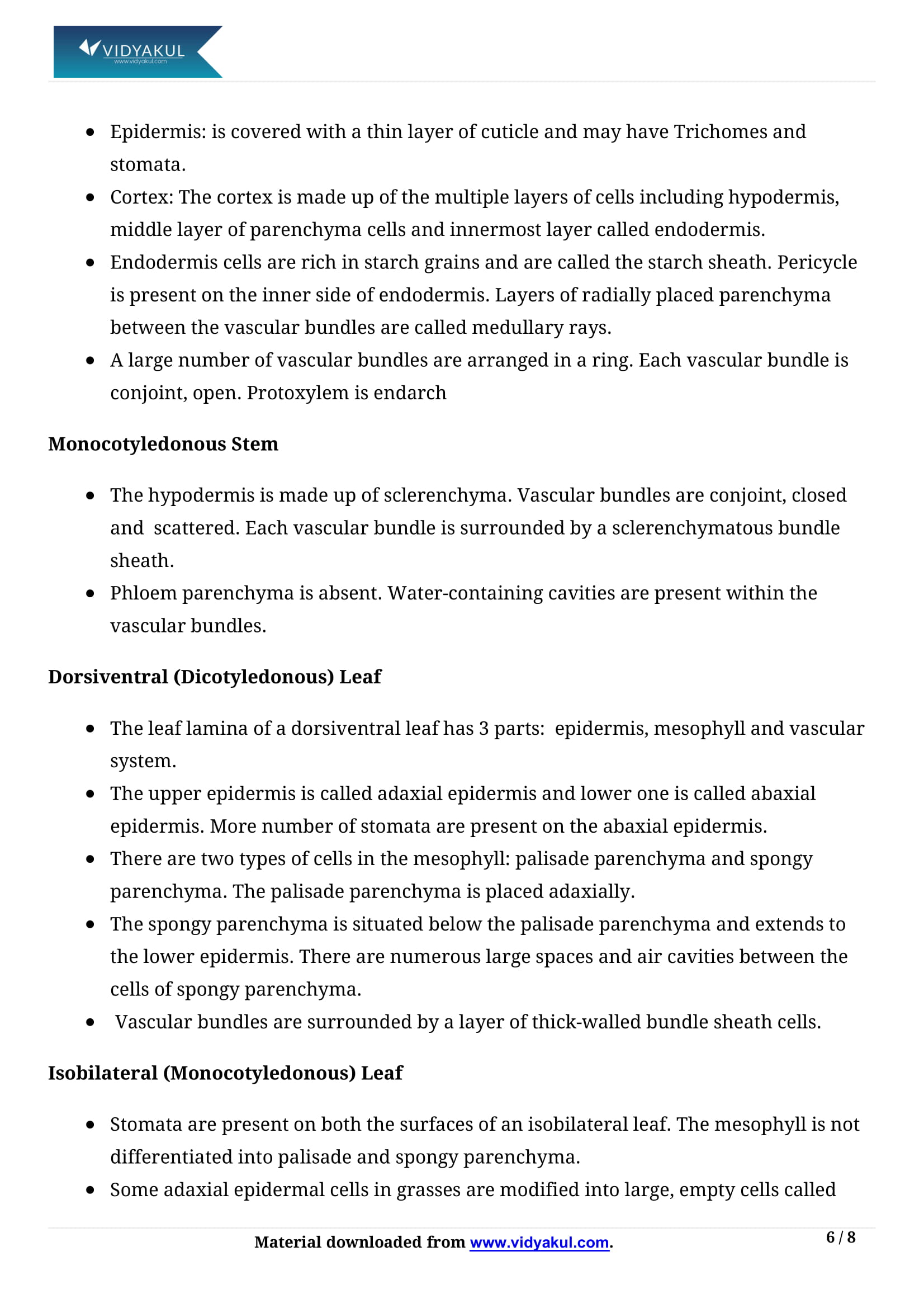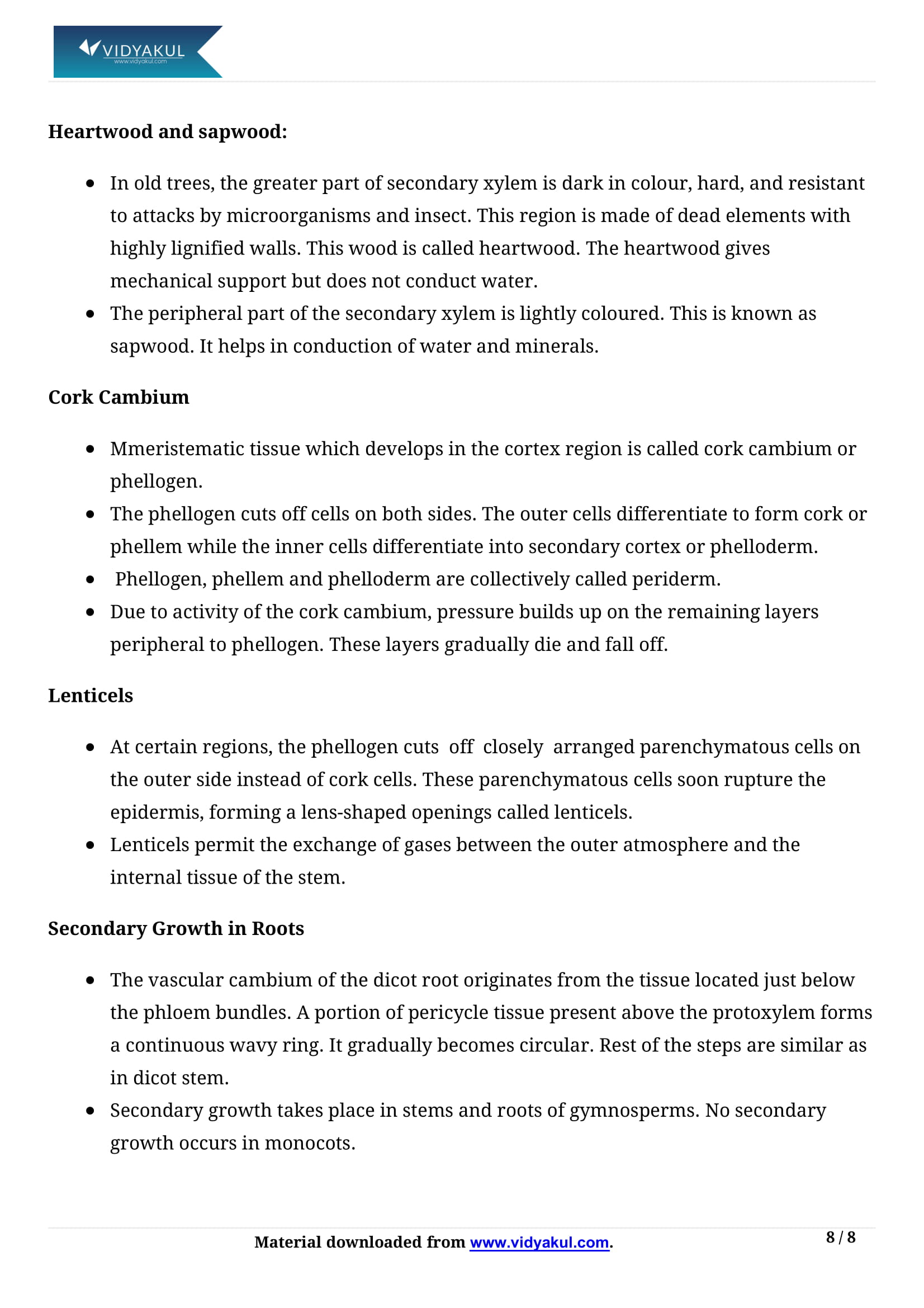Anatomy of Flowering Plants Class 11 Notes

Chapter 6 Anatomy of Flowering Plants
Chapter 6 of 11th grade biology covers the anatomy of flowing plants. Students can read this article to access PDF notes. Students must study the topics and concepts carefully in order to answer the questions in the exercise. Students can follow a series of notes to understand the right approach to the right question solution.
NCERT decisions are prepared by Vidyakul's team of experts who understand the testing and scoring system followed by the CBSE Board.
CBSE CLASS 11 BIOLOGY CH-6
Points to Remember
Below we have provided some of the important points for Class 12 Biology Chapter 6. Therefore, students can refer to it.
The long polymers of nucleotides are known as nucleic acid.
While DNA stores genetic information, RNA mostly helps in the transfer and expression of information.
RNA evolved first and from it, the DNA was extracted.
The genes split in the case of eukaryotes.
DNA Fingerprinting is a technique to find out variations in individuals of a population at the DNA level.
Topics and Sub-topics
"The Molecular Basis of Genetics Genetics" is one of the most interesting chapters. Students who have already covered the genetics section in previous lessons will love this chapter. Students may find some concepts difficult. So in the future, students can practice accordingly.
NCERT Biology Class 12 notes Chapter 6 covers a variety of important sub-topics such as DNA, RNA, Replication, Transcription, and more. So, practicing the questions in each of these Vidyakul subtopics will help your students get ahead of their peers. Students can refer to Vidyakul NCERT notes to gain a deeper understanding of the subject. So, with these materials, you can quickly master your training in no time.
Frequently Asked Questions
What are the three types of ‘Meristematic Tissue’?
1. Apical meristem2. Lateral meristem3. Intercalary meristem
What are the functions of a ‘Permanent Tissue’?
1. Providing support 2. Protection as well as in photosynthesis 3. Conduction of water, minerals and nutrients
What are the parts of a plant?
Plants typically have six basic parts: roots, stems, leaves, flowers, fruits and seeds.
Practice Questions
Define xylem.
What is a dicot root?
What are angiosperms?
What are simple tissues?
What are complex tissues?.
What is a monocotyledon?
What is a meristem? Explain the types.
Differentiate between monocot and dicot roots.
Explain the internal structure of a flower with a labelled diagram.
Describe the structure of dorsiventral leaf with a labelled diagram.
The long polymers of nucleotides are known as nucleic acid.
While DNA stores genetic information, RNA mostly helps in the transfer and expression of information.
RNA evolved first and from it, the DNA was extracted.
The genes split in the case of eukaryotes.
DNA Fingerprinting is a technique to find out variations in individuals of a population at the DNA level.
What are the three types of ‘Meristematic Tissue’?
What are the functions of a ‘Permanent Tissue’?
What are the parts of a plant?
Define xylem.
What is a dicot root?
What are angiosperms?
What are simple tissues?
What are complex tissues?.
What is a monocotyledon?
What is a meristem? Explain the types.
Differentiate between monocot and dicot roots.
Explain the internal structure of a flower with a labelled diagram.
Describe the structure of dorsiventral leaf with a labelled diagram.
Learn more about this in Anatomy of Flowering Plants Class 11 Notes pdf.
Download this solution for FREE Download this PDF
Download Vidyakul App for more videos, PDF's and Free video lectures.
